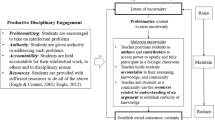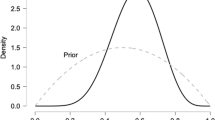Abstract
Uncertainty is an essential component of scientific inquiry and it also permeates our daily lives. Understanding how to identify, evaluate, resolve and live in the presence of uncertainty is important for decision-making strategies and engaging in transformative actions. In contrast, confidence and certainty are prized in elementary school classrooms. In this study we ask when and how children express their uncertainty during science activities and about what they are uncertain. This descriptive study focuses on the use of a linguistic element often associated with a process of hedging and distancing - the term ‘maybe’ (and related modifiers ‘might’, ‘perhaps’, ‘probably’, ‘possibly’ and ‘could’). These words could be interpreted negatively as hedging or they could be interpreted positively as uncertainty marking possibilities to be explored. We report that these words were typically employed by speakers to modify statements, claims or assertions in order to indicate uncertainty that marks possibility in the form of three types, which we term: potentiality, discernment and challenge. We reflect on the possible intersubjective meanings that could be made when these modifiers are used in conversations with and between elementary school students (7-8 years old). We test our interpretation on transcripts from a variety of databases and show that these categories are viable regardless of age or context. We draw implications for ‘maybe’ as an indicator of children’s recognition of uncertainty and possibility during their science learning. We discuss how teachers who are attuned to and encourage the use of this family of modifiers might able to promote interactions that consistently foster more dialogic interactions.


Similar content being viewed by others
References
Bakhtin, M. M. (1981). The dialogic imagination: Four essays (trans: Emerson, C., & Holquist, M.). In M. Holquist (Ed.), Austin: University of Texas Press. (Original work published in 1975).
Bakhtin, M. M. (1986). Speech genres and other late essays (trans: McGee, V. W. ). In C. Emerson & M. Holquist (Eds.), Austin: University of Texas Press. (Original work published in 1979).
Brown, P., & Levinson, S. (1978). Politeness: Some universals in language usage. New York: Cambridge University Press.
Choi, A., Notebaert, A., Diaz, J., & Hand, B. (2010). Examining arguments generated by year 5, 7, and 10 students in science classrooms. Research in Science Education, 40(2), 149–169.
Crismore, A., & Kopple, W. J. V. (1997). The effects of hedges and gender on the attitudes of readers in the United States toward material in a science textbook. In A. Duszak (Ed.), Trends in linguistics: Culture and styles of academic discourse (pp. 223–249). Berlin: Walter de Gruyter.
Dewey, J. (1997). How we think. Mineola: Dover Publications, Inc.
Duschl, R. A., Schweingruber, H. A., & Shouse, A. W. (2007). Taking science to school: Learning and teaching science in grades K-8. Washington: National Academies Press.
Gallas, K. (1995). Talking their way into science: Hearing children’s questions and theories, responding with curricula. New York: Teachers College Press.
Garvey, C. (1979). An approach to the study of children’s role play. The Quarterly Newsletter of the Laboratory of Comparative Human Cognition, 1(4), 69–73.
Garvey, C., & Hogan, R. (1973). Social speech and social interaction: egocentrism revisited. Child Development, 44, 562–568.
Halliday, M. A. K. (1970). Language structure and language function. In J. Lyons (Ed.), New horizons in linguistics (pp. 140–164). Harmondsworth: Penguin.
Jordan, B., & Henderson, A. (1995). Interaction analysis: foundations and practice. Journal of the Learning Sciences, 4(1), 39–103.
Kirch, S. A. (2007). Re/Production of science process skills and a scientific ethos in an early childhood classroom. Cultural Studies of Science Education, 2(4), 785–815.
Kirch, S. A. (2010). Identifying and resolving uncertainty as a mediated action in science: A comparative analysis of the cultural tools used by scientists and elementary science students at work. Science Education, 94(2), 308–355.
Knorr-Cetina, K. (1995). Laboratory studies: The cultural approach to the study of science. In S. Jasanoff, G. Markle, J. Petersen, & T. Pinch (Eds.), Handbook of science and technology studies (pp. 140–166). Thousand Oaks: Sage.
Latour, B. (1999). Pandora’s hope: Essays on the reality of science studies. Cambridge: Harvard University Press.
Latour, B., & Woolgar, S. (1986). Laboratory life: The construction of scientific facts. Princeton: Princeton University Press.
MacWhinney, B. (2000). The CHILDES project: Tools for analyzing talk. Mahwah: Lawrence Erlbaum and Associates.
MacWhinney, B. (n.d.). TalkBank Retrieved February 28, 2008, 2008, from http://talkbank.org/.
MacWhinney, B. (n.d. b). TalkBank database guide. Retrieved February 2008, from Carnegie Mellon University: http://talkbank.org/data/talkcorpora.pdf.
Magnusson, S. J., & Palincsar, A. S. (2005). Teaching to promote the development of scientific knowledge and reasoning about light at the elementary school level. In M. S. Donovan & J. D. Bransford (Eds.), How students learn: Science in the classsroom (pp. 421–474). Washington: National Academies Press.
McGinn, M. K., & Roth, W.-M. (1999). Preparing students for competent scientific practice: implications of recent research in science and technology studies. Educational Researcher, 28(3), 14–24.
Metz, K. (2004). Children’s understanding of scientific inquiry: their conceptualization of uncertainty in investigations of their own design. Cognition and Instruction, 22(2), 219–290.
Michaels, D. (2008). Doubt is their product: How industry’s assult on science threatens your health. New York: Oxford University Press.
Osborne, M. D. (2007). Towards an ethos of early childhood science education. Cultural Studies of Science Education, 2(4), 823–828.
Peat, F. D. (2002). From certainty to uncertainty: The story of science and ideas in the twentieth century. Washington: Joseph Henry Press.
Pianta, R. C., Belsky, J., Houts, R., Morrison, F., & NICHD Early Child Care Research Network. (2007). Opportunities to learn in America’s elementary classrooms. Science, 315, 1795–1796.
Pollack, H. N. (2003). Uncertain science...Uncertain world. New York: Cambridge University Press.
Roth, W.-M. (1995). Authentic school science: Knowing and learning in open-inquiry science laboratories. New York: Springer.
Roth, W.-M. (2009). Radical uncertainty in scientific discovery work. Science, Technology & Human Values, 34, 313–336.
Roth, W.-M., Tobin, K., & Ritchie, S. (2001). Re/constructing elementary science. New York: Peter Lang Publishing, Inc.
Rowland, T. (2000). The pragmatics of mathematics education: Vagueness in mathematical discourse. New York: Falmer Press.
Shields, C. M. (2007). Bakhtin primer. New York: Peter Lang Publishing, Inc.
Varelas, M., Pappas, C. C., Kane, J. M., & Arsenault, A. (2008). Urban primary-grade children think and talk science: curricular and instructional practices that nurture participation and argumentation. Science & Education, 92, 65–95.
Wertsch, J. V. (1998). Mind as action. New York: Oxford University Press.
Woods, D. K. (2007). Transana 2.21 (Mac) [Computer software and tutorial]. Madison: Wisconsin Center for Education Research.
Acknowledgements
We thank the DATCIV (Data Analysis Through Collaborative Inquiry) group for early conversations about interpretation. We thank Moshe Sadofsky, Ranyee Chiang, Kara Naidoo, and the RISE reviewers for reading and commenting on versions of this manuscript. Their questions and ideas strengthened this presentation. We would also like to thank the classroom teachers for sharing their expertise in elementary education and for their willingness to coteach and welcome us into their classrooms. Finally, we are indebted to the students who participated in this study for their involvement and enthusiasm.
Author information
Authors and Affiliations
Corresponding author
Rights and permissions
About this article
Cite this article
Kirch, S.A., Siry, C.A. “Maybe the Algae was from the Filter”: Maybe and Similar Modifiers as Mediational Tools and Indicators of Uncertainty and Possibility in Children’s Science Talk. Res Sci Educ 42, 261–280 (2012). https://doi.org/10.1007/s11165-010-9197-y
Published:
Issue Date:
DOI: https://doi.org/10.1007/s11165-010-9197-y




